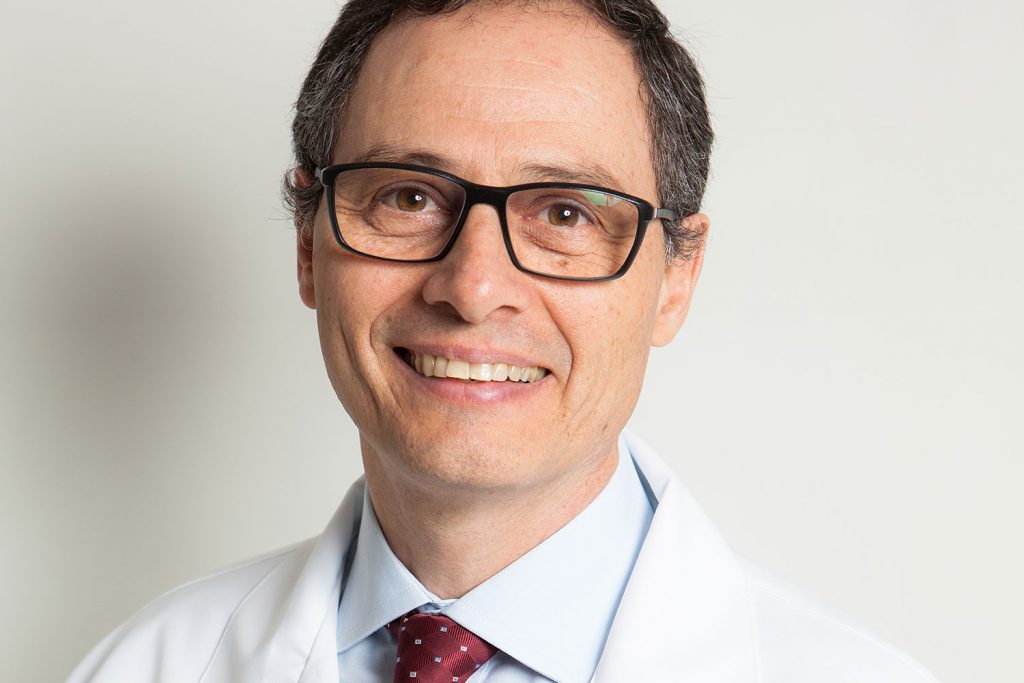Aluro news
“Without correct toothbrushing, a chlorhexidine mouthwash cannot work properly”
14 Apr 2020
Dr Hugo Lewgoy is a specialist in oral and maxillofacial surgery, and restorative dentistry, and a professor in the specialisation course in dentistry of the São Leopoldo Mandic College in Brazil. In addition, he is a certified lecturer in CURADEN’s individually trained oral prophylaxis (iTOP) programme, a member of the International Team for Implantology, and a member of the International Association for Dental Research. A champion of prevention, he talks about the importance of maintaining good oral hygiene during and after periodontal therapy in this interview.
You are based in São Paulo in Brazil. What is the dental situation in Brazil like? How strong is the focus on prevention and dental hygiene in practices there?
Unfortunately in Brazil, the focus is not on prevention; rather, it is on treatment and restoration. We have over 50 million people with oral health problems, so, obviously, we need to change the situation. I am working hard to effect this change and try to do my part by giving iTOP lectures, and through CURAPROX, I can offer patients and professionals the most efficient tools for good prophylaxis.
Is chlorhexidine your usual choice of mouthwash when treating patients?
Yes, because a lot of studies have demonstrated chlorhexidine’s great efficacy against dental biofilm and its benefits as an adjunct in periodontal treatment. In addition, chlorhexidine is able to target a wide range of pathogens and reach almost all infected areas inside the mouth, such as the tongue, the tonsils and the cheeks. Research shows that chlorhexidine meets the largest number of periodontal clinical parameters, compared with other mouthwashes. However, it should not be used long term, as side effects need to be taken into account.
Do these side effects influence patient compliance during treatment?
In rare cases, there can be a loss of taste. I have had patients complain about the unpleasant taste and tooth discoloration, and some stopped using the mouthwash for these reasons. Regarding the dental staining, patients are already aware of possible side effects, and I always do a dental cleaning after chlorhexidine treatment.
These side effects usually only occur after long-term use when treating severe cases of periodontitis. The ideal situation is when I can prescribe a chlorhexidine mouthwash for specific cases that require around two weeks of rinsing, such as postoperative treatment, rather than prescribing it as an adjunctive during long-term periodontal treatment.
To which extent does correct use of the mouthwash by the patient influence treatment results?
Patient compliance is important because obviously chlorhexidine is there to maintain or improve the results of periodontal treatment. For example, between two clinical sessions, an infected site could reinfect an already treated one. This can be prevented by using the mouthwash as prescribed by the dental professional.
However, I feel it is important to say that the use of a mouthrinse should not function as a primary treatment. Without correct toothbrushing, a chlorhexidine mouthwash cannot work properly. For people who are unable to manage biofilm mechanically, it is important to use an effective mouthwash with as few side effects as possible.
What do you tell patients who obviously are not brushing well?
I tell them that correct toothbrushing and interdental cleaning are imperative to maintain good oral health. I always make this very clear and encourage such patients by teaching them individually how to improve their brushing skills. I make it clear, also, that it is their own responsibility to maintain their oral health. Being an iTOP instructor helps because I can introduce them to new tools, such as interdental brushes, and teach them very specific techniques. Positive reinforcement, noticeable improvement of their oral health and using charts, graphs and figures also help. Patients will cooperate when they understand that correct individual brushing is the most important thing. Motivation and instruction on the part of the dentist are the best ways to achieve this cooperation.